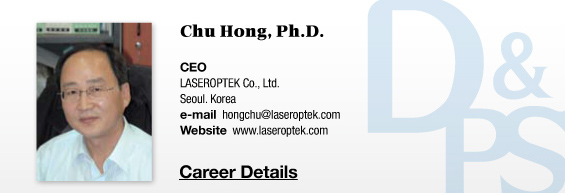▶ Previous Artlcle : #12-2. Operation Principles and Methods of Different Lasers Ⅱ
Nonlinear crystal used in Q-switching
Nonlinear crystal used in Q-switching has linear electro-optic effect. Electro-optic effect refers to adjustment or modification of the refractive index of the medium by applying the electric field to the medium. Most non-centrosymmetric crystals exhibit linear electro-optic effect.
HELIOSⅡ/LOTUSⅡ/HYPERION – Manufacturer: LASEROPTEK(www.laseroptek.com)
This effect is also known as Pockels effect, which refers to a phenomenon where the refractive index changes in direct proportion to the strength of the electric field. Materials that exhibit Pockels effect are called photoelectric materials. On the other hand, the refractive index change of all centrosymmetric materials are proportionate to the square of electric field. This is called Kerr effect which is much weaker than the Pockels effect.
Crystalline materials exhibit various nonlinear optic properties related to nonlinear polarization. Nonlinear crystals used in Q-switching include potassium di-deuterium phosphate (KD*P=DKDP), potassium titanyl phosphate (KTP), β-barium borate (BBO), lithium niobate (LiNbO₃), lithium tantalate (LiTaO₃), and ammonium dihydrogen phosphate (NH₄H₂PO₄, ADP), etc. Each of these crystals is selected based on the corresponding Q-switch laser characteristics such as average power or high repetition rate.
In general, Q-switching elements using linear electro-optic effect are called Pockels cells which have two different geometric structures depending on the direction of electric field applied to the nonlinear crystal.
Longitudinal electric field
As shown in <figure 14-1>, to apply the electric field in the same direction as the light propagation, the voltage is applied by electrodes formed at the metalized end faces of the crystal. This provides the advantage of enlarging the aperture of a Pockels cell (figure <14-1> right).

<Figure 14-1> Pockels cell with longitudinal electric field. The left is a modulator with a small aperture and the right is a modulator with a large aperture.
-To be continued-
▶ Next Artlcle : #13-2. Operation principles and method of different lasers Ⅲ





















